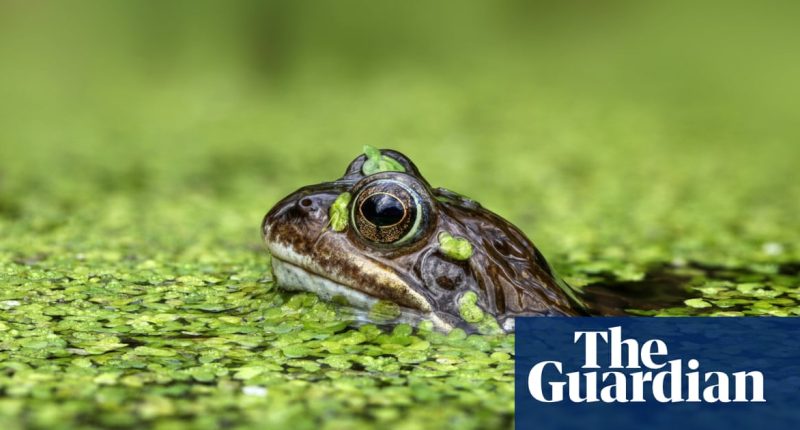Share this @internewscast.com
Before entering Edinburgh’s Royal Botanic Garden, visitors must walk over disinfecting mats to rid their shoes of bacteria or other pathogens. Next to the mats is a sign whose admonition seems at once both practical and religious: “Cleanse your soles.” Whenever I visit, as I often do, this sign always makes me smile: this ritualised cleaning is an important measure to prevent outbreaks of disease among the garden’s 730 species, but it also seems to be some kind of spiritual act.
Anyone tempted to jump that mat should read Liz Kalaugher’s new book, a wide-ranging, thorough and persuasive investigation of the ways in which we have made non-human animals sick. Her book reads as a kind of shadow history of human endeavour and innovation, tracing the calamitous price that trade, exchange and intensive farming have exacted on everything from frogs to ferrets. It’s a measured and detailed account, but below the calm surface you can hear an anguished cry imploring us to open our eyes and see how our own health is intertwined with that of other species.
We are now keenly aware of zoonotic diseases – those that jump from wildlife to humans, such as HIV and Covid. But we appreciate less how our own actions have caused or facilitated the spread of disease in the other direction, whether through migration, habitat destruction, domestication or intensive farming. In the 1980s, Jared Diamond coined the term “evil quartet” to denote the main causes of species extinction: habitat destruction, introduced species, overkill and secondary extinctions (others have suggested climate change as a fifth). To that enlarged list, Kalaugher would now add disease – what she calls the elephant in the room.
In each chapter, she introduces us to a remarkable range of species whose fate has been shaped by diseases. The presence of the “elephant” is not always obvious in ecosystems already under extreme pressure, and Kalaugher details the painstaking efforts of scientists trying to establish how and why particular populations are collapsing. Often the cause of outbreaks appears tragically trivial in comparison with the magnitude of their effects: for example, the introduction of a canary-like bird to Hawaii may have introduced the avian pox that devastated its native population of birds.
Drawing on genetic analysis, researchers can reconstruct detailed histories of diseases, and speculate about the human actions that helped them to spread. Some of the findings Kalaugher presents are jaw-dropping. She relates how a geneticist at the University of Cambridge, Elizabeth Murchison, examined dog tumours and identified the living cells of a “founder dog”, that is, the first dog to suffer from Sticker’s sarcoma, a sexually transmitted cancer (the animal lived in Siberia between 4,000 and 8,500 years ago and may have resembled an alaskan malamute). How strange to think that this creature is, in one sense, still with us.
If her narrative is at times unbearably sad, it is enlivened by Kalaugher’s precise descriptions of her subjects’ behaviour and anatomy. Disease, a deviation from normal function, inevitably provokes in us a kind of estrangement, a tendency to look again at the familiar. She explains how amphibians are in steep decline – 41% of remaining species are threatened with extinction – in part because of a chytrid fungus that affects their skin. A frog’s skin is very different from our own; it takes in oxygen and even water, serving as both lungs and gullet. For us, a skin fungus may be an inconvenience; for an amphibian, it is fatal.
Equally intriguing is the work of those conservationists battling to protect imperilled species, whether by vaccinating monk seals, placing frogs in “saunas” to kill the fungus, or capturing wild species for captive breeding (such initiatives are not without risk; Kalaugher writes that conservationists accidentally introduced chytrid fungus to Mallorca in the 1990s when they released infected frogs into the wild). Behind each of these efforts there lurks the question: wouldn’t it be easier, and less costly, to prevent the need for such drastic and expensive interventions?
Kalaugher suggests a range of preventive measures, such as regulating the pet trade, but acknowledges that we also need a radical shift in ethics and outlook. After reading her book, I now interpret that sign in the Royal Botanic Garden as an invitation to cleanse ourselves of bacteria, yes, but also of the fiction that our own health can be separated from that of the ecosystems around us.
















